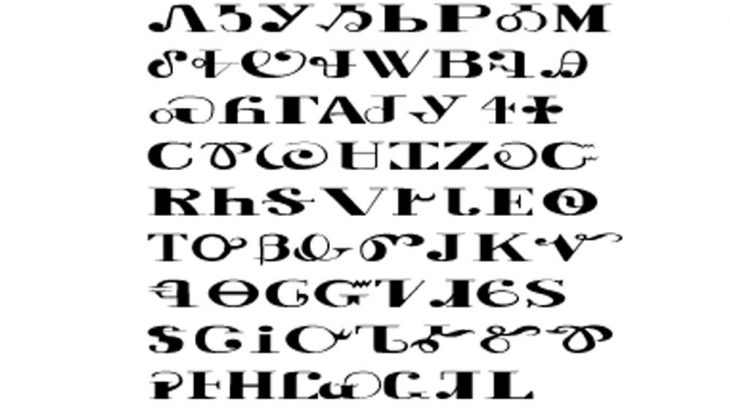In some regions of the United States – the states of Tennessee, North Carolina, Oklahoma – unfamiliar characters are applied to road signs, unlike the letters of the English alphabet. As you drive by, you are probably wondering what they and russian to english mean.
Apparently, this is a Cherokee language, which is an example of the extraordinary elasticity and survivability of the language. Despite the efforts that have continued for a hundred years to destroy the Cherokee, today there are 22 thousand native speakers of this language.
How did they manage to keep their language?
Cherokee is unique among Native American languages. Its peculiarity is that it exists in both written and oral versions. The written language of Cherokee, or more precisely, Tsalagi, has a rich syllabic writing system – a set of symbols, each of which corresponds to a specific sound. There are two known versions of the invention of this letter.
The most popular story (besides, supported by facts) says that the syllabic writing was created around 1821 by the Cherokee Indian George Guess or Gist, known among the Cherokee as Sogwali, and among the pale-faced people who did not bother themselves the correct pronunciation of his name as Sequoyah.
Indeed, Sequoia is a name that historical sources have preserved. He created the Tsalagi alphabet by observing how the pale-faced settlers communicate by means of writing. At first he studied with his little daughter, then with many of his fellow tribesmen who wanted to master the syllabary. As a result, he trained thousands of Cherokee. According to this generally accepted version, the Sequoia was also something of a diplomat for the Cherokee Indians, signing agreements for them.
However, there is another version of this story. In 1971, Traveler Bird, one of the descendants of the Sequoia, published a book in which he stated that the Sequoia was not the creator of the Tsalagi alphabet; he was only the last of a clan of scribes to transmit the language in his writing through the generations. According to Beard, Sequoia did not invent syllabic writing, he simply passed on the special knowledge of his community to the broad masses of the Cherokee tribe. While some of the syllabary characters in their modern form are similar to the English alphabet, Traveler Beard argues that they were simply “modernized” by pale-faced missionaries who wanted to hide the fact that the Native Americans were able to independently develop their writing methods. Many historians have questioned this version due to lack of evidence.
Preserving the language
It doesn’t matter when or who created the tsalagi syllabic, the idea was brilliant. Newspapers, books and biblical publications were printed, which contributed to the survival of the Cherokee language, even after many members of the tribe converted to Christianity and their lifestyle became very similar to that of the pale-faced settlers.
This helped preserve the language despite the tragedy of the Trail of Tears – the forced relocation of Cherokees from Tennessee and North Carolina to Oklahoma after the government decided that the pale-faced settlers deserved the land on which they live.
Since the military did not even allow people to prepare for a long, exhausting journey, according to various estimates, from four to eight thousand people died on the way. Then, in the name of “assimilation,” the government established rules that took Native American children from their homes and sent them to schools, where they were punished if they heard them speak their native language.
After all this history, the signs for the “trail of tears” and other important historical sites of the Cherokee, with inscriptions in the Cherokee language, are very impressive. And the most amazing thing is that there are still people who can read them.
